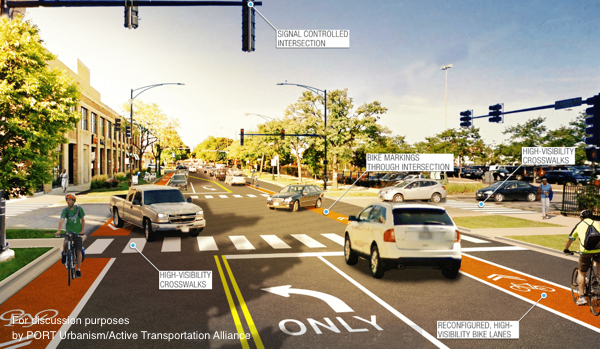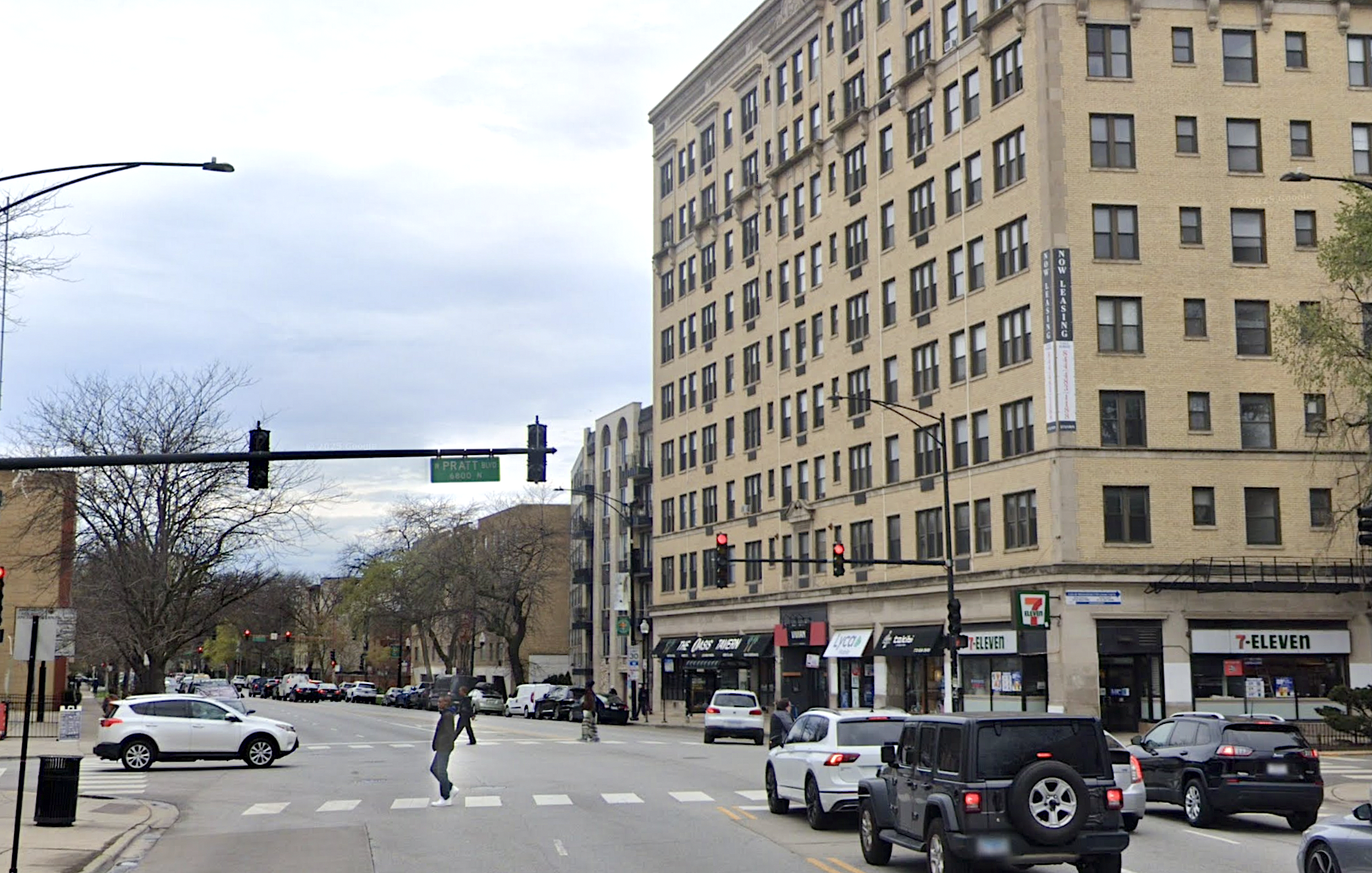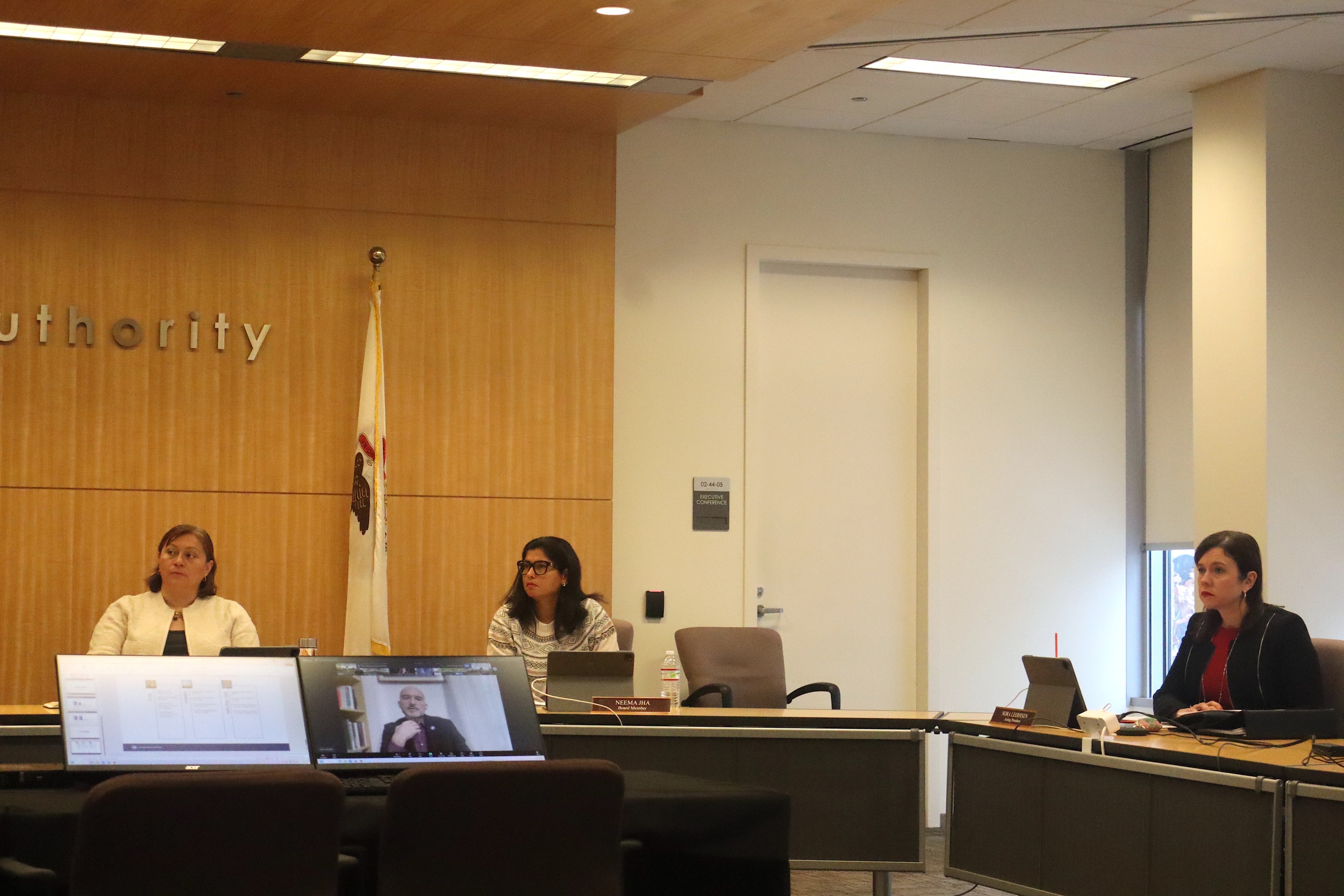
The Active Transportation Alliance plans to advocate for solutions to make the sometimes-deadly intersection of Logan Boulevard and Western Avenue less dangerous, as well as recommend other safety improvements for the historic boulevard.
The east-west street is a key biking route route between Logan Square, Lincoln Park, and Lakeview. But due to the fact that, east of Western, the boulevard bends northeast to meet up with Diversey Avenue, as well as poor sightlines created by Kennedy Expressway and Metra overpasses, as well as the presence of nearby highway access ramps, Logan/Western is a complex and perilous junction. For example, in April 2008 a driver fatally struck Columbia college student and Apple Store employee Tyler James Fabeck, 22, as he biked through the intersection.
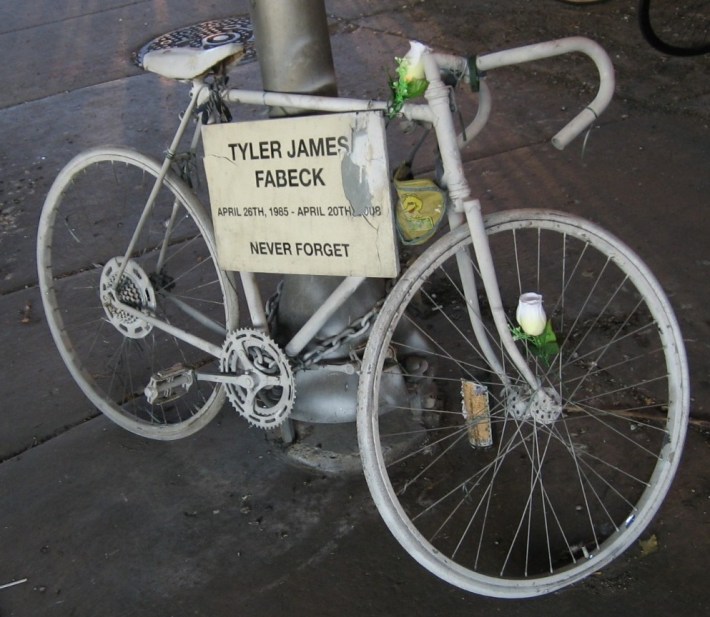
Active Trans will be working with the Logan Square Neighborhood Association and the design firm PORT Urbanism to study Logan Boulevard and Diversey Avenue from Maplewood Avenue to the Lathrop Homes just east of the Chicago River. The study area crosses an existing bike and pedestrian path on the east side of the river that will eventually link up with the 312 RiverRun, improvements to the nearly two-mile stretch of riverfront between Belmont and Montrose, which are currently under construction.
In addition to being an important bike route, Logan Boulevard is also used by pedestrians traveling between Logan Square and suburban-style large retail on on Logan east of Western Avenue and along Elston Avenue. The study represents a great opportunity to address the Logan/Western intersection's long-ignored hazards. However, part of the challenge of fixing the junction will be that Western Avenue is under Illinois Department of Transportation jurisdiction, and IDOT has historically prioritized motor vehicle traffic flow over safety improvements, let alone ease of travel for people on foot and bikes. IDOT has reportedly even opposed the installation of "Watch for Bikes" signs at this location.
The skewed geometry of the intersection means that pedestrians and cyclists have long crossing distances, and the complex layout means that they have to watch out for drivers approaching from multiple directions. While there are bike lanes on the diagonal stretch of Logan between Western and Diversey, there are no bike ways on Logan Western of Western or Diversey in this part of town.
To get the ball rolling on improving the intersection, PORT Urbanism created an initial rendering of what an improved boulevard might look like between Western and Elston, where the street passes by the parking garage for an Xsport Fitness and the local Target store's vast parking lot. It proposes a new stoplight at Jones Street, which provides access to the department store and the Windy City Fieldhouse recreation center. The new signal could reduce the number of drivers who attempt to quickly turn left out of the street, and give pedestrians an additional place to cross.
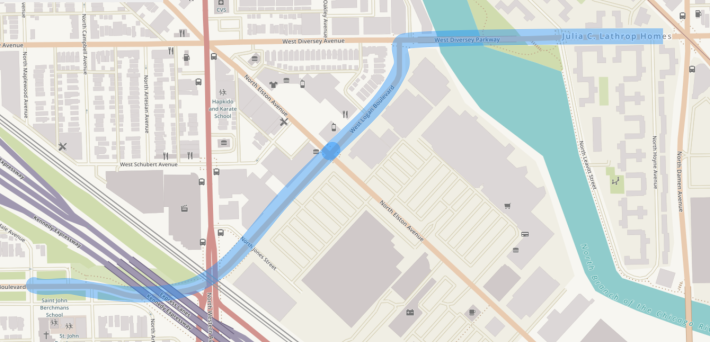
The rendering also shows the existing curbside bike lanes upgraded with rust-colored pavement marking, which is a good idea. However, the northeast-bound bike lane is shown sandwiched between two mixed-traffic lanes, and nobody wants to bike with cars and trucks passing by them on both sides of them.
Active Trans project manager Steve Simmons says the first step of the project will be to "engage residents and stakeholders in a variety of activities to collect input and build support for improvements" over the next six months. "The project advisory committee will do a walk audit in the spring and we have other public engagement activities planned."
Simmons says the study will wrap up in the fall when the recommendations will be published in a report. After that Active Trans will "continue working with stakeholders to implement changes, which will likely include finding funding for them."
What is the city's role?
Simmons says that 32nd Ward Alder. Scott Waguespack's chief of staff Paul Sajovec will be part of the advisory committee. The Chicago Department of Transportation is "aware" of the study, but isn't involved, according to spokesman Mike Claffey. "We welcome the public engagement process and look forward to seeing the ideas that are generated by the community," Claffey says.
Simmons adds that "it's too early to say anything concrete about funding" because Active Trans has just started talking to residents and stakeholders, but the group will work on finding money to implement the recommendations.
You can contact Simmons at steve@activetrans.org or 312-216-0472 with questions and comments and receive updates on the group's Chicago River Trail campaign mailing list.
This post is made possible by a grant from Freeman Kevenides, a Chicago, Illinois personal injury law firm representing and advocating for bicyclists, pedestrians and vulnerable road users. The content belongs to Streetsblog Chicago, and Freeman Kevenides Law Firm neither endorses nor exercises editorial control over the content.
